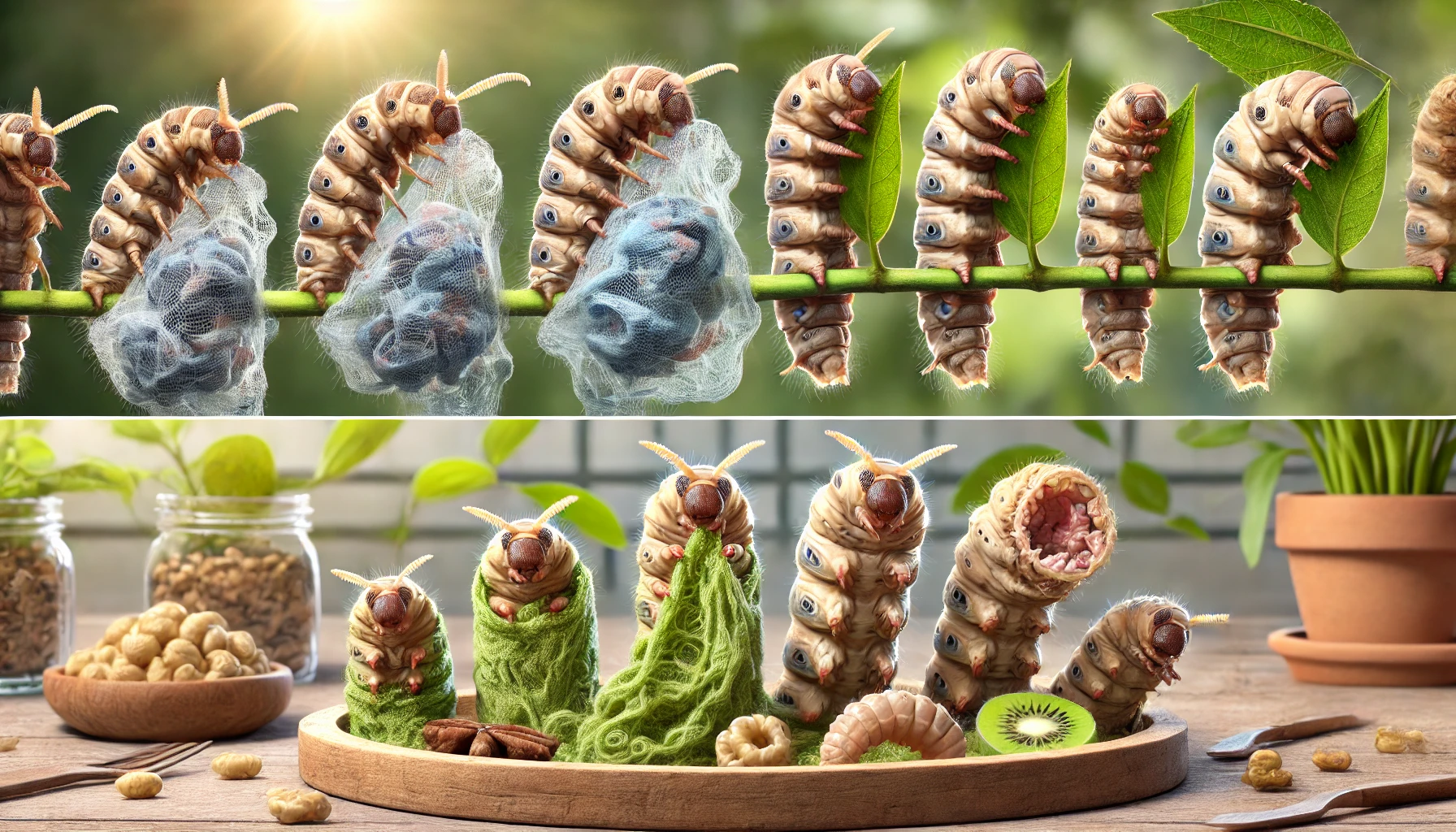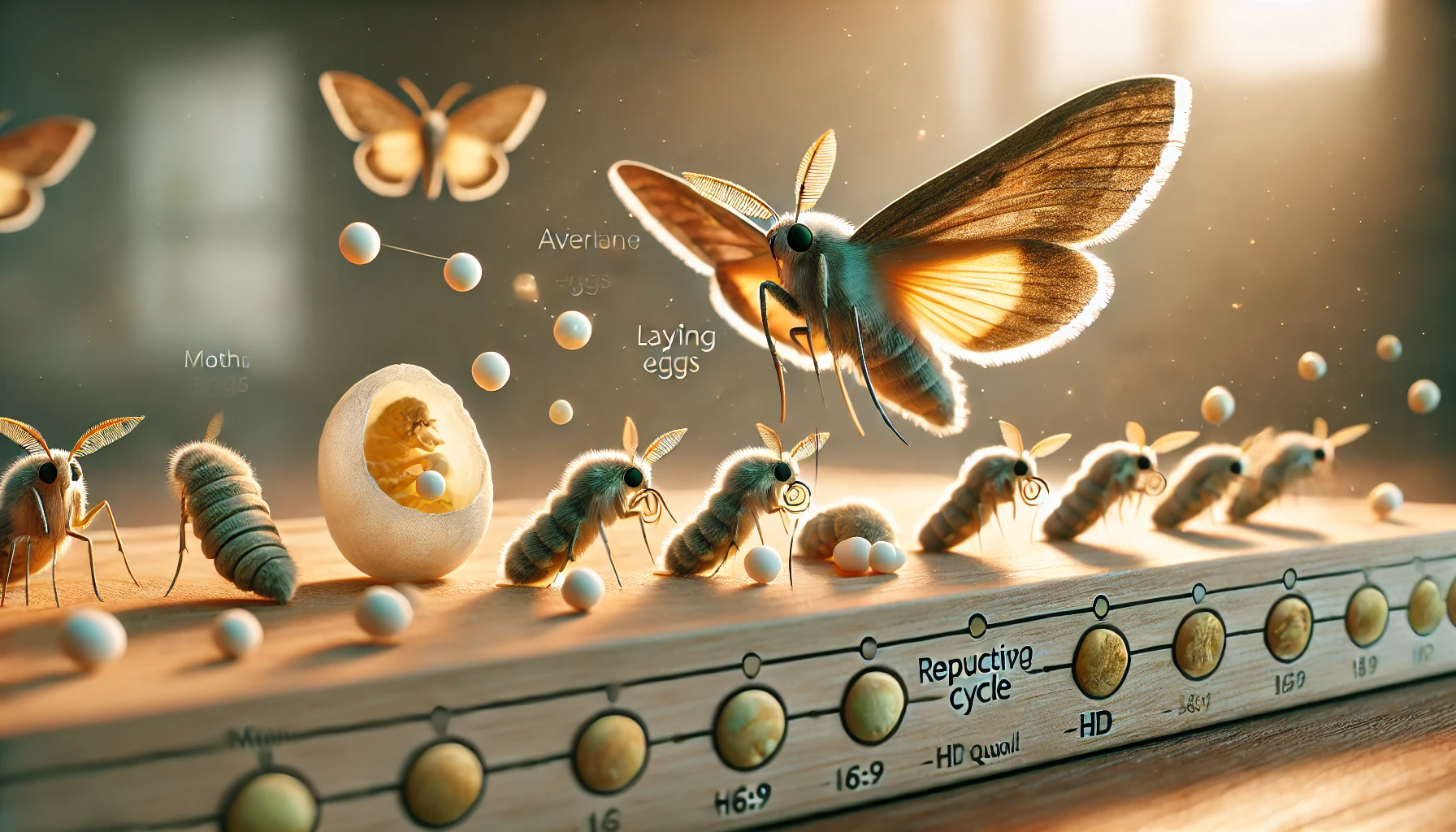Key Takeaways
-
Mating: Female moths release pheromones to attract males, initiating the mating process.
-
Egg Laying: Females lay eggs near plants that provide food for the larvae once they hatch.
-
Larval Stage: Caterpillars feed on various plant materials to grow and prepare for the next stage in their life cycle.
-
Pupation: Caterpillars transform into moths within protective cocoons, where they undergo metamorphosis.
-
Adult Lifespan: Adults live for a short period, mainly to reproduce and continue the cycle.
-
Generations: In warmer climates, some moth species can produce several generations each year.
 These tiny Moths are a vital part of our ecosystem, yet they can be a nuisance when they infest homes and businesses. Understanding the moth reproduction process can help homeowners and pest control professionals manage and prevent infestations. This guide will walk you through the key stages of moth reproduction and provide useful insights on how to control moth populations in your home.
These tiny Moths are a vital part of our ecosystem, yet they can be a nuisance when they infest homes and businesses. Understanding the moth reproduction process can help homeowners and pest control professionals manage and prevent infestations. This guide will walk you through the key stages of moth reproduction and provide useful insights on how to control moth populations in your home.


Not getting a solution?
Get your free pest control estimate today!1. Mating: How Moths Find Each Other
Moth mating begins with a fascinating process where female moths release pheromones—chemical signals that attract males. These pheromones can travel over long distances, allowing males to find mates even when they are far away. For example, the Gypsy moth (Lymantria dispar) releases a unique sex pheromone, which males can detect and follow, making it easier to locate females. In areas with a lot of human activity, like cities or suburban neighborhoods, moths are often attracted to artificial lights. This can lead to swarming around buildings, making them easier to spot and control. Additionally, some species exhibit lekking behavior, where multiple males gather in a specific area and attract females collectively. The gold swift moth (Hesperia colorado) is an example of a species that uses this technique to increase its chances of mating.
2. Egg Laying: Where Do Moths Lay Their Eggs?
Once mating is successful, female moths search for suitable places to lay their eggs. These eggs are often laid near plants that will serve as food for the hatching larvae (caterpillars). For example, the Codling moth (Cydia pomonella) lays its eggs on apple trees, where the larvae will later hatch and begin feeding on the fruit. The number of eggs a female moth lays varies by species. Some moths, like the Gypsy moth, can lay anywhere from 100 to 1,000 eggs in a single batch. These eggs are typically laid in protected locations, such as on the underside of leaves, tree bark, or even inside cracks and crevices around homes and buildings. Urban areas, with their abundance of plants and sheltered spaces, provide plenty of opportunities for moths to lay eggs, potentially leading to infestations.
3. Egg Development: How Long Does it Take for Eggs to Hatch?
Moth eggs undergo development inside the protective shell, and the time it takes for them to hatch can vary depending on environmental conditions like temperature and humidity. In warm climates, such as those found in southern parts of the U.S., eggs can hatch in as little as a week. In colder climates, the process may take longer. The hatching time also depends on the moth species. For instance, the Codling moth’s eggs generally hatch in 7 to 12 days, while the Luna moth (Actias luna) takes around 10 days to 2 weeks. Once the eggs hatch, tiny larvae (caterpillars) emerge, ready to start feeding on nearby plants.
4. Larval Stage: Growing Up and Eating
The larval stage is critical to the moth’s life cycle. After hatching, the caterpillars begin feeding on various plant materials, including leaves, flowers, and fruits. This feeding process helps them grow quickly and store up energy needed for their transformation into adults. Some species of moths, such as the Luna moth, feed on trees like hickory and walnut, while others, like the Corn earworm moth (Helicoverpa zea), target crops such as corn. During this stage, caterpillars may go through several molts (shedding of their skin) as they grow larger. In urban and suburban areas, the availability of a wide range of plants allows caterpillars to thrive, making moth infestations more likely, especially in the summer months when food is abundant.
5. Pupation: Changing into a Moth
Once the caterpillars have reached their full size, they stop eating and seek out a safe location to pupate (transform into a pupa). During pupation, caterpillars spin a protective silk cocoon around themselves. The cocoon shields them while they undergo metamorphosis, transforming into adult moths. The pupal stage can last anywhere from a few weeks to several months, depending on environmental conditions. Some moths, like the Spongy moth (Lymantria dispar), may enter a dormant state called diapause, which helps them survive through the winter months or other unfavorable conditions. During diapause, the pupal stage can last much longer, and the moth will only emerge when environmental conditions are favorable again.
6. Adult Moths: The Final Stage
After undergoing metamorphosis, the adult moth emerges from its cocoon. The newly emerged moth’s wings are soft and wet, so it spends several hours pumping hemolymph (insect blood) into the wings to expand and harden them. Once the wings have hardened, the moth can take flight. Adult moths generally have a short lifespan—usually between one and two weeks. Their main purpose during this time is reproduction. They do not eat, as they rely on the energy stored during the caterpillar stage. Some species, like the Gypsy moth, may only live for a few days, while others, such as the Polyphemus moth (Antheraea polyphemus), can live up to several weeks.
7. Moth Generations: How Often Do Moths Reproduce?
Moth species can have varying reproductive cycles. Some species, like the Luna moth, have one generation per year, while others, like the Indian meal moth (Plodia interpunctella), can produce multiple generations in a single year. This depends largely on the climate and food availability in the area. In regions with warmer temperatures, such as Florida, moths may produce several generations annually. This can lead to larger populations and more frequent infestations. On the other hand, species in cooler climates may only reproduce once a year. Understanding these patterns is key to controlling moth populations and preventing infestations in homes and businesses.How to Control Moth Populations
- Moth infestations can cause significant damage to household goods, fabrics, and food supplies. To prevent or manage moth populations, consider the following tips:
-
Seal Cracks and Gaps: Moths can enter through small openings in windows, doors, and walls. Sealing these cracks helps keep them out.
-
Store Food Properly: Store food items like grains and cereals in airtight containers to prevent moth larvae from contaminating your pantry.
-
Use Moth Traps: Pheromone-based moth traps attract and capture adult moths, helping reduce the population and prevent further reproduction.
-
Call a Professional: If the infestation is persistent, consult a pest control expert for a thorough inspection and targeted treatment to eliminate moths and prevent re-infestation.
Why Understanding Moth Reproduction is Important
By understanding the reproductive process of moths, pest control professionals can develop more effective strategies for managing moth populations. Focusing on specific stages of the moth life cycle—such as egg laying, caterpillar feeding, and pupation—can lead to more efficient control methods. This is especially important for areas with higher population densities, where moths can cause widespread damage.If you’re experiencing a moth problem in your home, don’t wait until it becomes a full-blown infestation. Click here for a free pest inspection and let the experts at Pest Exterminators help you get rid of moths for good.
If you feel things have gone out of control, it is advised to contact pest control professionals. Our team can provide a customized approach to protect your home effectively.
Visit our Species, Control, and DIY Guide sections for additional resources on moth and ways to tackle a moth infestation.





